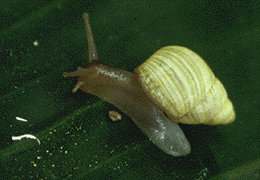
The IUCN Red List of Threatened Species, founded in 1965, has evolved to become the world's most comprehensive inventory of the global conservation status of biological species. It uses a set of criteria to evaluate the extinction risk of thousands of species and subspecies. These criteria are relevant to all species and all regions of the world, With its strong scientific base, the IUCN Red List is recognized as the most authoritative guide to the status of biological diversity. A series of Regional Red List are produced by countries or organizations, which assess the risk of extinction to species within a political management unit.
On 29 January 2010, the IUCN Red List of Threatened Species identified 5220 endangered species, subspecies and varieties, stocks and sub-populations.

Red-cheeked squirrels form a taxon under the subfamily Callosciurinae. The six species which are all found only in Asia are listed as "Least Concern" by the IUCN.
On 30 January 2010, the IUCN Red List of Threatened Species identified 9694 Vulnerable species, subspecies and varieties, stocks and sub-populations.

Orthetrum is a genus of dragonflies in the Libellulidae family. It is a very large genus.
Chlorocypha is a genus of damselflies in the family Chlorocyphidae.

Partula is a genus of air-breathing tropical land snails, terrestrial pulmonate gastropod mollusks in the family Partulidae. Many species of Partula are known under the general common names "Polynesian tree snail" and "Moorean viviparous tree snail". Partulids are distributed across 5,000 square miles (13,000 km2) of Pacific Ocean islands, from the Society Islands to New Guinea.
On 29 January 2010, the IUCN Red List of Threatened Species identified 6,702 data deficient species.
On 29 January 2010, the IUCN Red List of Threatened Species identified 9 data deficient species in the Protista kingdom.
On 29 January 2010, the IUCN Red List of Threatened Species identified 3 data deficient species in the Nemertina phylum.

The World's 25 Most Endangered Primates is a list of highly endangered primate species selected and published by the International Union for Conservation of Nature Species Survival Commission Primate Specialist Group, the International Primatological Society (IPS), and Conservation International (CI). The 2012–2014 list added the Bristol Conservation and Science Foundation (BCSF) to the list of publishers. The IUCN/SSC PSG worked with CI to start the list in 2000, but in 2002, during the 19th Congress of the International Primatological Society, primatologists reviewed and debated the list, resulting in the 2002–2004 revision and the endorsement of the IPS. The publication has since been a joint project between the three conservation organizations and has been revised every two years following the biannual Congress of the IPS. Starting with the 2004–2006 report, the title changed to "Primates in Peril: The World's 25 Most Endangered Primates". That same year, the list began to provide information about each species, including their conservation status and the threats they face in the wild. The species text is written in collaboration with experts from the field, with 60 people contributing to the 2006–2008 report and 85 people contributing to the 2008–2010 report. The 2004–2006 and 2006–2008 reports were published in the IUCN/SSC PSG journal Primate Conservation, while the 2008–2010 and 2010-2012 report were published as independent publications by all three contributing organizations.





